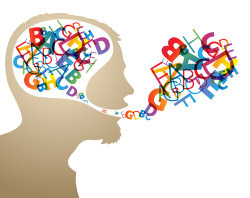English Pronunciation:
3 Sounds Most Non-Native English Speakers Pronounce Differently Than American Speakers

THERE IS NOTHING WRONG WITH YOUR ENGLISH! It’s true.
The real cause of your communication problem with American speakers is that you’re just not making the sounds that their ears expect to hear.
Now you may or may not be aware of this, but pronouncing just THREE particular sounds differently in American English can totally ruin a perfectly good conversation and make you feel awkward and out of place.
Have you ever had this problem? You know that you can speak the English language well enough and you can certainly understand spoken English without any problems, but because you pronounce certain sounds differently, you are often confronted with a stupefied, “could you please repeat that?” look by the person you are talking to… IF that person didn’t just outright ask you to kindly repeat what you said already.
It’s a PROBLEM experienced by many non-American English speakers who live in places where people primarily speak American English.
Undeniably, when it comes to speaking English, there are multitudes of lilts, speeds, and pronunciations in World Englishes. (Yes, the word English can be plural when you are talking about the different varieties on Earth.)
While they all share a huge percentage of words and sounds, no one can deny that New Zealand English, South African English, American English, and Indian English have some distinct differences.
And while no one type of pronunciation is better or worse than another, many people get used to hearing, and indeed expect to hear certain sounds when they listen to other people. Sometimes not getting what they expect can leave them truly dumfounded.
This makes it particularly hard for people living in the United States who grew up elsewhere.
So really, it’s not even about the quality of your English skills; it’s just your different pronunciation.
Take my friend Anand…
Every day he would stop by Starbucks to order his favorite coffee drink; and every day the barista would ask, “Sorry, what was that?”
Anand is the kind of guy who is educated, intelligent, fluent and articulate. The only thing going on was that some of his pronunciation and intonation was slightly different from what the barista expected to hear.
Still, this kind of thing wore on Anand and gradually slapped at his confidence.
Living in a new country and culture is hard enough, but when you speak and understand a language well but aren’t understood by others, it can be disheartening.
Fortunately, it’s pretty easy to recognize some of the pronunciation differences once they are pointed out. Then, with some instruction and persistence, you can start substituting the new sounds when you speak to American listeners, and voila! the barista is ringing up your order without apology.
Here are three common differences between American and Non-American pronunciation:
(Continues below...)
1- The TH
Many non-native speakers put their tongue behind their teeth when using a TH. If you are a non-native speaker, try saying the words “the thing” out loud and see if you can identify where you are placing your tongue when you use the TH. Can you feel the tip of your tongue touching somewhere behind your teeth?
If your tongue is touching your top teeth, or even somewhere above your top teeth, American listeners are often going to interpret your TH for a T or a D.
In American English you have to place your tongue between your top and bottom teeth and allow air to flow smoothly around the tongue.
It may sometimes feel uncomfortable when you are just getting started. For one thing, you are simply not used to forcing your tongue forward for this sound. For another, it may feel kind of rude to stick your tongue out. But rest assured, as long as you don’t stick it out very far, no American will even notice it!
2- The R
The R shows up in many languages around the world, but it has great variations in its pronunciation. The North American R is especially unique. That’s probably why almost everyone who didn’t grow up in the U.S. or Canada pronounces it differently than North Americans.
In many foreign languages, the R is often pronounced by tapping the tip of the tongue quickly on the top tooth ridge (the place where the teeth and palate meet), or slightly above or below that area.
Try saying- Ron has a very nice car. You may be able to recognize that “tap” whenever you come to the R.
On the other hand, the tip of the tongue in the American R does not touch anything. In fact, the tip rolls up slightly. Another characteristic is that the lips have to round a bit. Without both of these movements, you cannot truly make an American R.
The R is a little tougher to learn. It often takes some instruction and a lot of practice to say it on a consistent basis. But like everything about American pronunciation, it is possible to learn, practice and use.
3- The /ae/ as in CAT
When you look at the symbol for /ae/ as in cat, you will see that there is both an /a/ and an /e/. This is because this sound is a mixture of both of those sounds.
It’s almost like opening your mouth a lot for the /a/, but then thinking /e/ at the last possible moment. Many people who learn to do this correctly think of this as a big annoying sound. And it is to an extent. A lot of the sound gets carried in the back of your throat.
If you don’t say it correctly, instead of hearing you pronounce happy with the /ae/, they may hear you say hoppy /a/ or heppy /e/. Of course they may be able to interpret it correctly, but there are a lot of words that could be confusing, i.e. bad vs. bed vs. bod.
If you can’t say those correctly, you definitely risk being misunderstood.
Author Bio:  Sheri Summers is a long-time English and accent trainer. She works with individuals around the world through private coaching programs and her online American Accent Course, to help them feel comfortable living, working and speaking in American English. She can be reached at support@aoshelp.zendesk.com.
Sheri Summers is a long-time English and accent trainer. She works with individuals around the world through private coaching programs and her online American Accent Course, to help them feel comfortable living, working and speaking in American English. She can be reached at support@aoshelp.zendesk.com.
